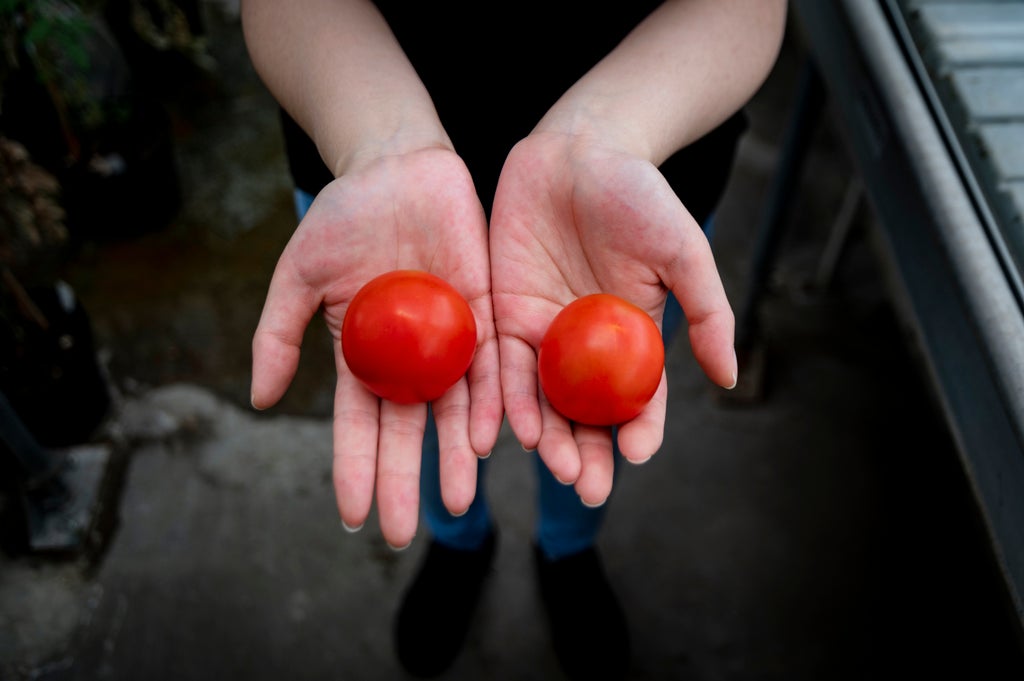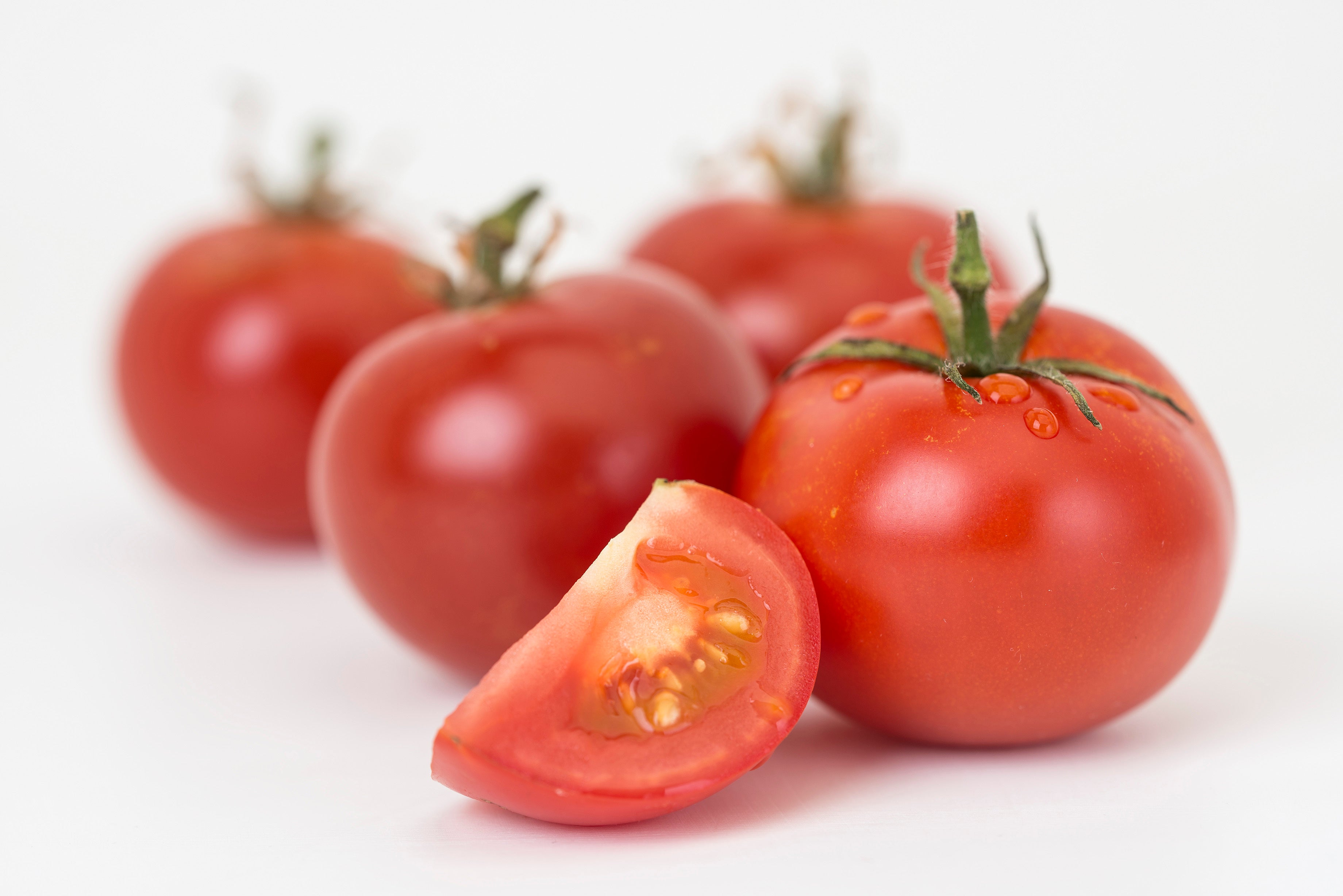
Gene-edited tomatoes could be a new source of vitamin D and help to reduce deficiency across the world, a new study suggests.
Researchers found that the salad favourite can be engineered to produce more of a precursor to vitamin D3 when a specific molecule that normally converts this vitamin to cholesterol is blocked.
When exposed to UV light, this precursor – provitamin D3 – can be converted to vitamin D3, the sunshine vitamin that so many people across globe do not have enough of.
These tomatoes – which look and taste like regular tomatoes – could represent a new dietary source of vitamin D with potential public health implications, scientists say.
The recommended daily intake of vitamin D is 10 micrograms for adults.
Researchers suggest eating just two of the new tomatoes could make up for the gap between how much vitamin D people in the UK are consuming, and how much they need.
They also found that the amounts of provitamin D3 in one tomato – if converted to vitamin D3 – would equal levels present in two medium-sized eggs or 28 grams of tuna.
Data suggests that around one in five adults and one in six children do not have enough vitamin D.
The body creates vitamin D after the skin is exposed to UVB light, but the major source is food.
Experts suggest this new biofortified crop could help millions of people with vitamin D insufficiency, a growing issue linked to higher risk of cancer, dementia, and many leading causes of death.
Professor Cathie Martin, corresponding author of the study, said: “We’ve shown that you can biofortify tomatoes with provitamin D3 using gene editing, which means tomatoes could be developed as a plant-based, sustainable source of vitamin D3.
“Forty percent of Europeans have vitamin D insufficiency and so do one billion people worldwide.
We are not only addressing a huge health problem, but are helping producers, because tomato leaves, which currently go to waste, could be used to make supplements from the gene-edited lines
“We are not only addressing a huge health problem, but are helping producers, because tomato leaves, which currently go to waste, could be used to make supplements from the gene-edited lines.”
Tomatoes naturally contain one of the building blocks of vitamin D in their leaves at very low levels, but this does not normally accumulate in ripe tomato fruits.
Researchers in Prof Martin’s group at the John Innes Centre used CRISPR-Cas9 gene editing to tweak a gene in tomatoes related to provitamin D3 normally being converted into cholesterol.
By editing the gene, they were able to block this process, leading to the substantial accumulation of provitamin D3 in the tomatoes’ fruits and leaves, without affecting plant growth, development or yield.
Tomato leaves are usually waste material, but those from the edited plants could be used for the manufacture of vegan-friendly vitamin D supplements, or for food fortification, the researchers suggest.
First author of the study Dr Jie Li said: “The Covid-19 pandemic has helped to highlight the issue of vitamin D insufficiency and its impact on our immune function and general health.
“The provitamin D-enriched tomatoes we have produced offer a much-needed plant-based source of the sunshine vitamin.
“That is great news for people adopting a plant-rich, vegetarian or vegan diet, and for the growing number of people worldwide suffering from the problem of vitamin D insufficiency.”
Explaining why these tomatoes might be a better alternative to vitamin D supplements, Prof Martin said people would also benefit from the other nutrients of the fruit, including fibre.
The study indicates that vitamin D in ripe fruit might be increased further by extended exposure to UVB, for example during sun-drying.
According to the researchers, exposing the plants to natural UVB light – from the sun – may be a more sustainable and effective way to grow them.
New laws that came into effect in April mean they have been given permission to grow the plants outside from June 1 to test this theory, and the Department for Environment Food and Rural Affairs (Defra) has been notified.
The tomatoes are expected to ripen one month later; however, it could yet be some time before the edited crop is ready to go to market.
Researchers suggest the change can be engineered into any tomato variety, and could probably work well in other solanaceous food crops such as peppers, chillies, potatoes and aubergines.
The study is published in Nature Plants.

It comes ahead of the Government proposing changes to the law that will make developing and selling gene-edited crops easier.
Later this week the Genetic Technologies (Precision Breeding) Bill is due to be introduced in the House of Lords.
The new laws will remove EU measures that prevent the development and marketing of “precision bred” plants and animals using techniques such as gene editing (GE).
Gene editing is different from genetic modification or GM technologies in that it changes characteristics of an animal or plant by deleting, swapping or repeating genes already present, rather than introducing a new one.







